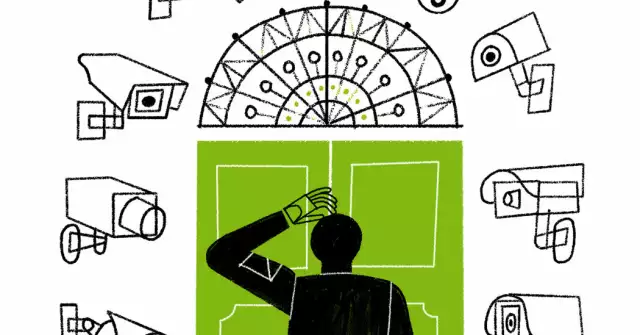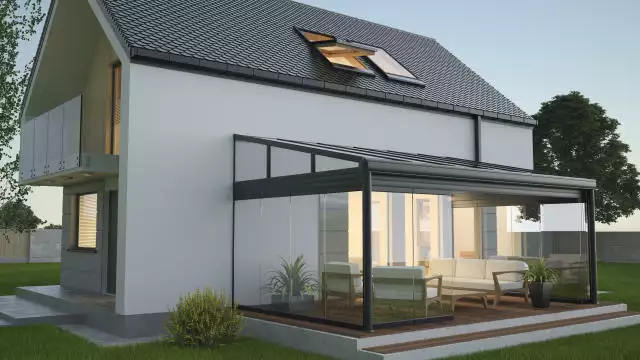Advice on buying a home security system, adaptable home work spaces and wallpaper
Advice on buying a home security system, adaptable home work spaces and wallpaper
This article is part of our latest Design special report, about new creative pathways shaped by the pandemic.
Can you recommend a security camera for outside my house that is discreet and looks really modern?
Why would you want a security camera that’s discreet? You want to scare off potential burglars, not let them know you have good taste. An elegantly designed unit sends out the message: “You think this is cool? I’ve got even nicer stuff inside!”
It turns out burglars are not very complicated. According to the Department of Justice, they are deterred by cameras, security stickers and floodlights. My advice would be to get a camera that’s not flashy — but actually flashes. Extra points for a good siren. It doesn’t have to be three feet tall or blare a John Philip Sousa march (although that would be nice), but it should be obvious.
A highly regarded brand that has all the bells and whistles is Ring. Its Floodlight Cam Wired Plus (from about $180) has motion-activated LEDs, full high-definition video and a built-in 105-decibel siren. The form is just bulky enough to announce itself and comes in basic black or white. Ring also allows you to monitor and get alerts through a smartphone app. With a subscription (from $3 a month), you can record video from one or several cameras. ring.com
Lead times for furniture have gotten pretty ridiculous, so I bought a beautiful vintage sofa from a dealer nearby. It is midcentury and in great shape but could use reupholstering. Can you recommend fabrics?
Prepandemic furniture deliveries used to take eight to 12 weeks, but those lead times have commonly mushroomed to eight to 12 months. So, yes, vintage makes a lot of sense. A basic rule for reupholstering (which you are free to break, of course) is to match the period of the piece or go completely in another direction. Classic midcentury textiles include wool bouclé and tweeds. Look to the company Herman Miller for inspiration as well as a source of many of the fabrics that were originally used in the period. hermanmiller.com
For lighter duty, you can find “Jetsons”-like futuristic patterns from Spoonflower, a company on Etsy. etsy.com If you’re after something graphic and classic, there’s nothing finer than fabrics by the 20th-century Australian designer Florence Broadhurst, which look tremendous on furniture from this period, or any other. florencebroadhurst.co.uk
You also might go completely off book and try a rich brocade or jacquard, a plush velvet, or some loopy Mongolian lamb in a lurid color. The British designer Ilse Crawford once covered a midcentury Alvar Aalto armchair in reindeer skin. The Marquis de Sade would have blushed.
I enjoy working from home, but I tend to move around throughout the day. Any suggestions for work furniture that allows me not to be confined to a single room or corner?
Moving around is good, ergonomically speaking. It improves blood flow and prevents repetitive stress. Several furniture designs make it easier.
The “kneeling chair,” originally conceived by a group of Norwegians and marketed as Balans, has been around since 1979. It puts you into a supported kneeling position, taking the strain off your back and strengthening your abs. You can drag one to any table where you work. The version sold by Vivo, an ergonomic office furniture company, is about $160. vivo-us.com
Similarly, Ballo, designed by Don Chadwick, a co-creator of the Aeron chair, is a stool that encourages (or rather insists on) good posture to keep you upright. The playful perch from Humanscale has a rounded base and no arms and starts at $399. humanscale.com
A C-shaped table that can pull up to your sofa turns a site of sloth into a reasonable workplace. A slim example from Room and Board comes in three heights and is $259. roomandboard.com
Finally, nesting tables offer unparalleled flexibility for work in any location. The set designed by Josef Albers in 1926 has four heights, each with a lacquered glass top in a different Bauhaus-approved color. The MoMA Design Store sells them for $1,895 (about $1,706 for members). store.moma.org
I’m redecorating my dining room and want to know: What’s trending in wallpaper?
To answer your question, I consulted my former Domino magazine colleague Dara Caponigro, the creative director at the fabric and wallpaper company Schumacher and editor-in-chief of its chic in-house magazine, Frederic.
She identified three themes that are big right now, the first literally so. “Using a large-scale pattern on the walls can be a major mood changer,” she said. “If pattern scares you, use it judiciously — in an entry, a powder room, the coat closet.” Examples from Schumacher are Daisy Chain, a bold, vaguely psychedelic Bloomsbury floral, and Fernarium, a botanical with a three-dimensional look.
A related second trend, scenic wallpaper, is about transporting you to another world. “When selecting a pattern, channel your happy place and you’ll always feel calm and collected,” Ms. Caponigro said. One recommendation is Sea Garden, an aquatic print inspired by a 17th-century Japanese silk.
Finally, she suggested matching fabric and wallpaper patterns such as Aveline, inspired by 19th-century Indian textiles. Going matchy-matchy is “a look that’s easy to pull off and creates instant polish,” she said. fschumacher.com
Readers are invited to send questions to designadvice@nytimes.com




